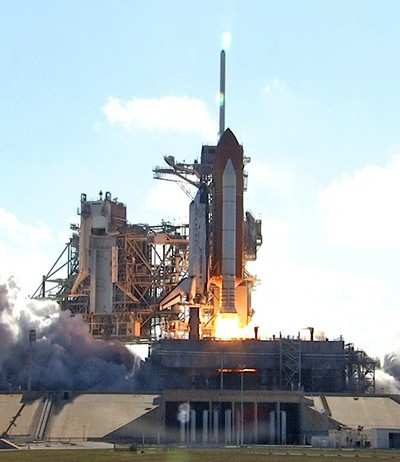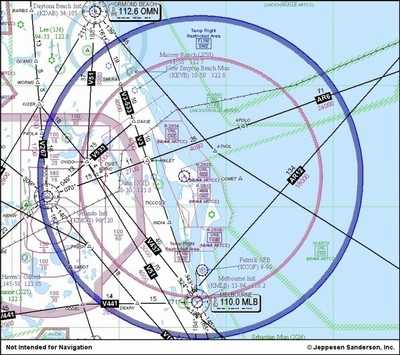Liftoff Planned For Thursday Afternoon From Kennedy Space
Center
Space shuttle Discovery is scheduled to begin an 11-day mission
to the International Space Station with a launch at 4:50 p.m. EST
on Thursday, Feb. 24, from NASA's Kennedy Space Center in Florida.
The STS-133 mission is Discovery's final scheduled flight.
Discovery's launch date was announced Friday at the conclusion of a
flight readiness review at Kennedy. During the meeting, senior NASA
and contractor managers assessed the risks associated with the
mission and determined the shuttle and station's equipment, support
systems and personnel are ready.

NASA Photo
The six astronauts for the mission will deliver the Permanent
Multipurpose Module (PMM) to the station. The PMM was converted
from the multi-purpose logistics module Leonardo and will provide
additional storage for the station crew. Experiments in such fields
as fluid physics, materials science, biology and biotechnology may
be conducted inside the module.
The PMM also carries Robonaut 2, the first human-like robot in
space, which will become a permanent resident of the station. In
addition, the flight will deliver critical spare parts and the
Express Logistics Carrier 4, an external platform that holds large
equipment.
STS-133 Commander Steve Lindsey and his crew are scheduled to
arrive at Kennedy on Sunday, Feb. 20, for final launch
preparations. Joining Lindsey are Pilot Eric Boe and Mission
Specialists Alvin Drew, Steve Bowen, Michael Barratt and Nicole
Stott. Bowen and Drew will conduct two spacewalks to install new
components and perform maintenance.
Discovery's launch will occur six hours after the planned
docking of the European Space Agency's Automated Transfer Vehicle-2
"Johannes Kepler" to the space station. STS-133 is the first
mission planned for 2011. It is Discovery's 39th flight and 35th
shuttle mission to the station.
As with every launch, the FAA has posted a TFR for the area
around the launch complex. General aviation and VFR operations are
prohibited within a 30-nautical-mile radius of Launch Pad 39A from
the surface to (but not including) 18,000 feet (located on the
Melbourne VOR/DME 004-degree radial at 30.6 nautical miles). Pilots
should obtain NOTAM information regarding affected airports
beginning Thursday, Feb. 24, from 0945 until no later than 1726
EST. If postponed 24 hours, the TFR will be in effect from Friday,
Feb. 25, at 0919 until no later than 1703 EST.

Space Center TFR
Within an airspace radius between 30 and 40 nautical miles of
Pad 39A, a discrete transponder code must be obtained and clearance
granted from air traffic control before entering this airspace.
Continuous radio communications must be maintained. All VFR
aircraft are restricted to 180 knots or less unless a variance is
granted by air traffic control. Pilots should obtain NOTAM
information to determine the affected airports within this radius
before departure.
NOTAM Information is available from the St. Petersburg FSS at
1-800-992-7433. Pilots may also contact Titusville at 123.6 MHz,
and Melbourne at 122.6 MHz. Other relevent radio frequencies
include FAA Orlando Approach Control Titusville/Cocoa area: 134.950
MHz Melbourne area: 132.650 MHz South Volusia County: 125.350 MHz
Space Coast Regional Airport control tower: 118.9 MHz
 ANN's Daily Aero-Term (05.29.25): Terminal Radar Service Area
ANN's Daily Aero-Term (05.29.25): Terminal Radar Service Area ANN's Daily Aero-Term (05.30.25): Very High Frequency (VHF)
ANN's Daily Aero-Term (05.30.25): Very High Frequency (VHF) Aero-News: Quote of the Day (05.30.25)
Aero-News: Quote of the Day (05.30.25) Airborne 05.23.25: Global 8000, Qatar B747 Accepted, Aviation Merit Badge
Airborne 05.23.25: Global 8000, Qatar B747 Accepted, Aviation Merit Badge ANN's Daily Aero-Linx (05.30.25)
ANN's Daily Aero-Linx (05.30.25)




